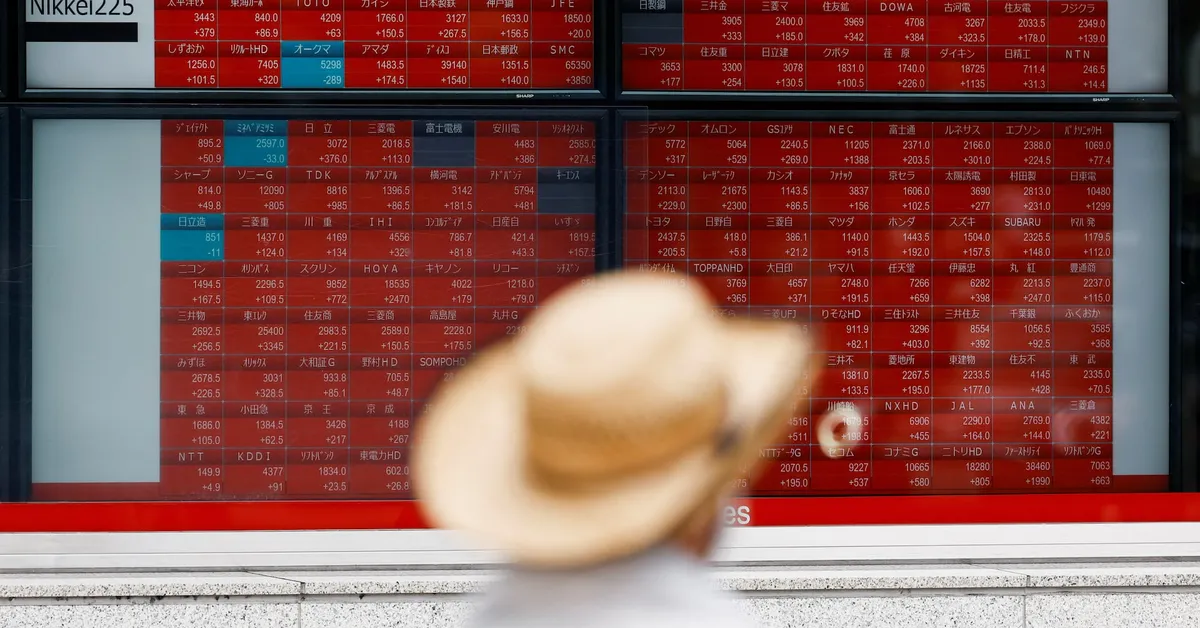
On June 27, European stock indexes opened higher, buoyed by encouraging developments in U.S.-China trade talks. The positive sentiment in the markets was further amplified by a notable decline in the U.S. dollar, which has slipped to its lowest value in over three years. Global stock markets have experienced a remarkable rally this week, with traders gaining confidence from a ceasefire between Iran and Israel and increasing bets on potential U.S. rate cuts.
The recent trade agreement between the U.S. and China focused on expediting rare earth shipments to the U.S., has been perceived positively by the market. This development comes during ongoing efforts to resolve the tariff war between the two largest economies in the world. Early trading in European shares reflected this optimism, following a significant rally in Asian markets, which reached their highest levels in over three years, mirroring the momentum from Wall Street.
“What we are witnessing is a potential wave of optimism regarding trade deals,” stated Vasileios Gkionakis, a senior economist and strategist at Aviva Investors. He noted that the markets have rebounded from low levels following the aftermath of Liberation Day in April. Additionally, Gkionakis mentioned that recent events in the Middle East prompted a minor sell-off, and the current recovery signals a shift in market sentiment.
In light of the evolving situation, Gkionakis expressed that while it is still early days, there is a growing fatigue regarding the themes of trade wars and deals, suggesting that the market wishes to move beyond these issues. Former President Trump has set July 9 as the deadline for the European Union and other nations to finalize a deal aimed at reducing tariffs.
The decline of the U.S. dollar continued, with the dollar index dropping by 0.2% to 97.183, marking its lowest point in more than three years. The euro gained strength, trading at $1.1713, buoyed by unexpected increases in French consumer prices for June. Market participants are closely monitoring U.S. monetary policy as they speculate on the possibility of Trump appointing a more dovish chair for the Federal Reserve.
Traders have intensified their expectations for U.S. rate cuts, now pricing in an anticipated 64 basis points (bps) of easing this year, compared to the 46 bps forecasted earlier. This year has seen the dollar experience its worst start since the era of free-floating currencies began in the early 1970s. Gkionakis reflected on this trend, stating, “It’s not merely a recalibration of the Fed; there's a more extensive issue at play regarding the tarnishing of U.S. exceptionalism.”
Later in the trading session, core PCE price data, which is the Federal Reserve's preferred measure of inflation, is expected to be released, potentially influencing market dynamics. Meanwhile, European bond yields remained mostly stable, with the benchmark 10-year German bond showing little change at 2.567%.
In the commodities sector, oil prices are on track for their largest weekly decline since March 2023, as they cooled down after briefly exceeding $80 amidst the Israel-Iran conflict. Currently, Brent crude futures are trading at $68.35 per barrel, while U.S. West Texas Intermediate crude is at $65.24 per barrel. This shift in oil prices reflects broader market trends and investor sentiment.
Reporting by Elizabeth Howcroft in Paris; Editing by Kim Coghill. Our Standards: The Thomson Reuters Trust Principles.
Elizabeth Howcroft specializes in finance and technology, focusing on Europe's fintech landscape and cryptocurrencies. She was part of the award-winning team that covered the collapse of crypto exchange FTX in 2022.